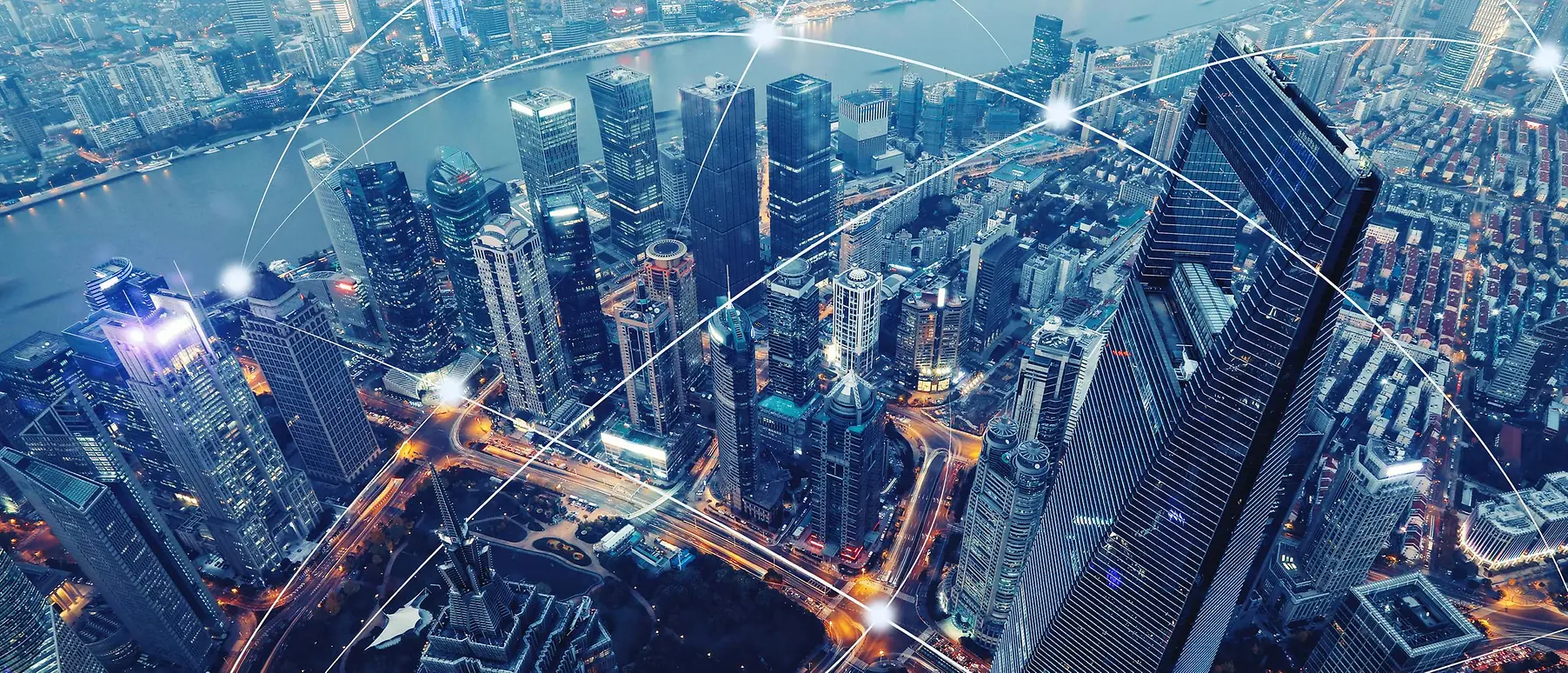Transforming our lives at high speed
The next generation of mobile network is going to revolutionize our world. It will enable traffic lights to interact with cars and cell phones to talk to the gadgets in our houses – but this futuristic vision will only be possible if there are game-changing innovations for transmitting and processing data. That’s why pioneering companies are exploring cutting-edge solutions to bring the fully connected world to life.
The fifth generation of mobile network – known as 5G network – will transmit data up to 100 times faster than existing 4G networks. It will handle 100 times more data and make it possible to download a full-length movie in just three seconds. This lightning-superfast connectivity will transform the way we live and work on a scale that has never been seen before. Everybody and everything on our planet will be connected at all times, generating and exchanging data about the flow of traffic, the efficiency of factories and the contents of refrigerators in real time. When 5G technology goes mainstream, nothing will ever be the same again. And it’s nearly here.
Pilot projects have already taken place in the USA and Germany, as well as during the 2018 Winter Olympics in South Korea. Experts predict that 5G networks will be up-and-running by the middle of the next decade – and companies and governments are doing everything they can to take advantage of the incredible opportunities that full connectivity is going to open up. IIt’s estimated that over 100 billion US Dollars will be invested in 5G technology between 2019 and 2022, and that 5G will create 22 million new jobs worldwide by 2035. It’s estimated that over 100 billion US Dollars will be invested in 5G technology between 2019 and 2022, and that 5G will create 22 million new jobs worldwide by 2035.
Turbo-charged mobile internet networks will affect every market and industry around the world – but the most immediate impact of 5G technology will be in the telecommunications sector. Supersonic 5G speeds will completely change the way people use the internet. Download speeds could reach 20 gigabits per second, compared to current speeds of 1 gigabit per second. Delays could fall to less than one millisecond, compared to 70 milliseconds on 4G networks. And wider coverage with more stable connections will lead to completely new shared experiences by enabling tens of thousands of people to access rapid mobile internet from the same place at the same time.
"By leveraging our new technology, networks can effectively double the frequency spectrum resources available for devices like smartphones and tablets."
Harish Krishnaswamy, Associate Professor of Electrical Engineering, Columbia University
This increased network coverage and stability is the key to making sure everything is connected at all times. It will empower cities to combine data from sensors in the street lights with images from cameras mounted in flying drones to optimize traffic flows, making journeys faster and safer while also cutting air pollution. Self-driving cars will use the 5G network to turn on the lights and heating in smart homes as they approach their destination, while innovative connected home appliances will cut energy consumption. And the entire system will perform real-time maintenance to ensure efficiency and safety.
From manufacturing to medicine
By enabling round-the-clock updates and improvements, 5G networks will also open up opportunities for companies to adopt advanced manufacturing approaches. Factories will feature more sensors, cameras, drones and robots to increase efficiency and quality. Connecting the entire value chain using 5G technology – from raw materials through to waste disposal or recycling – will generate data that can be used to identify potential improvements. And in the healthcare sector, patients will be able to choose to share certain data with doctors, insurance companies and the pharmaceutical industry to provide new insights into preventative medicine. Some patients may choose to wear health monitors that gather data 24-hours a day and support effective diagnosis of illnesses and injuries at an early stage. In fact, patients may even be able to have surgery performed remotely by expert surgeons from anywhere in the world.
Making the miracle possible
To support remote surgery or autonomous driving, it’s vitally important that the 5G network is always connected without any interruption. And the cars, factory equipment and consumer devices that access the 5G network will need to integrate more modules and components within increasingly small spaces. Compact camera modules, for example, are often the best way to collect data that can steer self-driving cars or enable automated manufacturing processes. But because camera modules are made from many layers, they would be too big to fit if they were assembled using screws or traditional adhesives. That’s why Henkel has developed an ultra-thin adhesive that enables the miniaturization of camera modules. This will have a major impact on the 5G technology – because it’s estimated that production of mini-camera modules will double in the next two years, from 5 billion per year up to 10 billion by 2020.
Alongside these camera modules, 5G-ready devices and equipment will also offer an increasing range of other functions like GPS or motion sensors. But these functions require additional components to be squeezed into cramped space – and all components generate heat when they are used. This heat needs to be managed effectively to avoid damage to the device or harm to users. Device manufacturers and telecommunications companies are reaching out to Henkel to help turn this challenge into an opportunity. Our thermal management products help to optimize the efficiency of electronic components while also extending their working life. Our gap pads, for example, quickly remove and redistribute heat to prevent critical parts from overheating.
More power, more towers
And it’s not just devices that need to stay cool. Memory chips in the giant server centers that will process and store the mountain of data generated by 5G also need to be super reliable. Servers will need to process massive volumes of data and store vast libraries within increasingly compact spaces. Innovative new designs have been created to enable memory chips to meet this challenge – thanks to a Henkel technology that enables the production of memory chips that feature 12 ultra-thin layers. These layers are interconnected, and Henkel has developed special underfill materials that protect the points where they join together to make sure this architecture is able to perform safely, reliably and efficiently.
On top of this huge increase in data storage and processing power, more and more cell towers will be needed to pick up and transmit data in order to make the 5G network dream a reality. In fact, it’s predicted that 20 million new cell towers will be installed around the world by 2025. These cell towers include base stations where all electronic signals converge. Henkel offers thermally conductive materials to dissipate heat away from the processor, as well as underfill encapsulations to protect it against vibration, and coatings that stop moisture and dust from damaging the circuit board.
The 5G network future is now
It may seem like something from a science-fiction film, but we’re now moments away from a new era where everyone and everything on the planet is constantly connected. 5G technology is going to revolutionize every life and transform every industry by opening up incredible opportunities to increase efficiency and develop radical new business models. Innovative companies and governments are exploring ways of turning any 5G-related market turbulence into a turbo-boost by accelerating the transition to a fully connected world where life is easier, faster and more efficient. It’s nearly here. And nothing will ever be the same again.

















